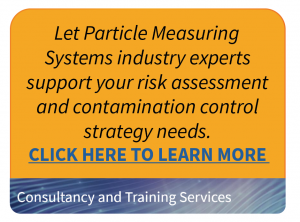Eine Kontaminationskontrollstrategie (Contamination Control Strategy, CCS) beschreibt eine Methode zur Identifizierung und Analyse von Risiken, zur Überprüfung von Möglichkeiten zur Risikominderung und von Innovationen und schließlich zur Festlegung von Plänen für Korrektur- und Präventivmaßnahmen. Bei der Umsetzung einer CCS wird versucht, die verschiedenen Ursachen für Kontamination und beeinträchtigte Sterilität anzugehen.
Die Umsetzung einer soliden Kontaminationskontrollstrategie erfordert die Unterstützung von Fachleuten aus den Bereichen Produktion, Regulierung, Qualitätskontrolle, Qualitätssicherung und unterstützenden Abteilungen.
Dies ist eine CCS gemäß der Definition in Annex 1:
“Contamination Control Strategy (CCS) – A planned set of controls for microorganisms, pyrogens and particulates, derived from current product and process understanding that assures process performance and product quality. The controls can include parameters and attributes related to active substance, excipient and drug product materials and components, facility and equipment operating conditions, inprocess controls, finished product specifications, and the associated methods and frequency of monitoring and control.”
Annex 1 (2022)
Hintergrund
Die Entwicklung einer umfassenden Kontaminationskontrollstrategie befasst sich mit der Optimierung der Umweltkontrolle und des Nachweises. Um die Zuverlässigkeit aufrechtzuerhalten und die Konstruktion des CCS zu unterstützen, sollten die Hersteller ein Qualitätsrisikomanagement (QRM) und “Quality by Design” in ihre Produktionsanlagen, Geräte, Personalflüsse und unterstützenden Prozesse implementieren. Von entscheidender Bedeutung ist auch die Überprüfung historischer Daten und die Trendanalyse, um Lücken, Risikopotenziale und Möglichkeiten zur Abschwächung angemessen zu messen und zu ermitteln; all dies spielt bei der Herstellung eines CCS eine Rolle. Das Design, die Verfahren, die Organisation und die technologischen Kontrollen sind am effektivsten, wenn sie sich gegenseitig auf ganzheitliche Weise ergänzen.
Entwicklung einer Kontaminationskontrollstrategie
Die vorgeschlagenen Elemente, die für das CCS zu berücksichtigen sind, sind in Anhang 1 aufgeführt:
“2.5 The development of the CCS requires detailed technical and process knowledge. Potential sources of contamination are attributable to microbial and cellular debris (e.g., pyrogen, endotoxin) as well as particulate (e.g., glass and other visible and sub-visible particles).
Elements to be considered within a CCS should include (but are not limited to):
i. Design of both the plant and processes including the associated documentation.
ii. Premises and equipment.
iii. Personnel.
iv. Utilities.
v. Raw material controls – including in-process controls.
vi. Product containers and closures.
vii. Vendor approval – such as key component suppliers, sterilization of components and single use systems (SUS), and critical service providers.
viii. Management of outsourced activities and availability/transfer of critical information between parties, e.g. contract sterilization services.
ix. Process risk management.
x. Process validation.
xi. Validation of sterilization processes.
xii. Preventative maintenance – maintaining equipment, utilities and premises (planned and unplanned maintenance) to a standard that will ensure there is no additional risk of contamination.
xiii. Cleaning and disinfection.
xiv. Monitoring systems – including an assessment of the feasibility of the introduction of scientifically sound, alternative methods that optimize the detection of environmental contamination.
xv. Prevention mechanisms – trend analysis, detailed investigation, root cause determination, corrective and preventive actions (CAPA) and the need for comprehensive investigational tools.
xvi. Continuous improvement based on information derived from the above.”
Annex 1 (2022)
Mehr erfahren… Füllen Sie das Formular aus, um das vollständige Papier herunterzuladen.

